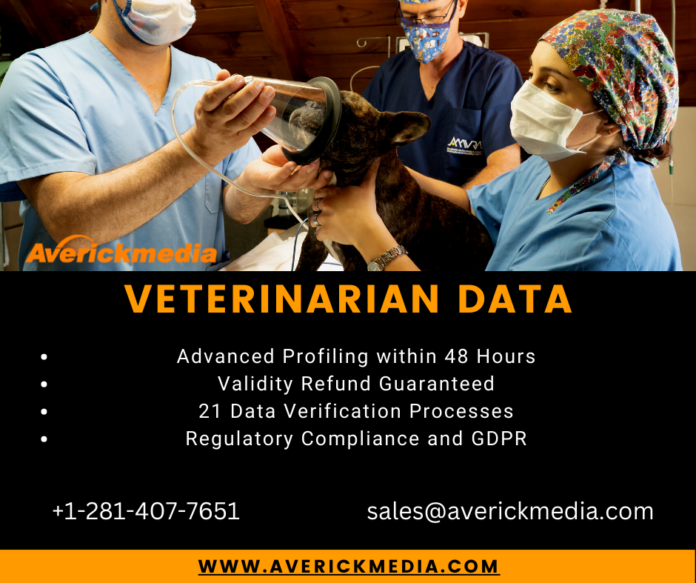Intro
Are you looking to effectively reach and engage with veterinarians? Then having a strong veterinarian email list is essential. With the rise of digital communication, email marketing has become an increasingly important tool for businesses to connect with their target audience, including veterinary professionals. However, simply having a list of email addresses is not enough. In order to truly make an impact and get the most out of your veterinarian mailing list, it is crucial to optimize it for maximum effectiveness.
Understanding the Importance of Email Lists in Veterinarian Services
Email marketing has become a crucial tool for businesses in various industries, including veterinary services. And to effectively reach and engage with veterinarians, having a strong veterinarian mailing list is of utmost importance.
But why is an email list so vital in the veterinary industry? Firstly, it allows you to directly connect with veterinarians who are interested in your services or products. By having a targeted list, you can ensure that your email campaigns are reaching the right audience, increasing the chances of generating leads and conversions.
Moreover, an email list provides a valuable opportunity to build relationships and trust with veterinarians. By regularly sending informative and engaging content, you can position yourself as an expert in the field, which will increase your credibility and make veterinarians more likely to choose your services.
Additionally, an email list enables you to stay top-of-mind with veterinarians. By consistently showing up in their inbox, you can remind them of your offerings and special promotions, which can lead to increased brand awareness and customer loyalty.
Implementing Strategies for List Building
When it comes to building a strong veterinarian email list, implementing effective strategies is crucial. One of the first steps is to create a veterinarian mailing list that is targeted and specific to your audience. This means gathering email addresses from veterinary professionals who are likely to be interested in your services or products. There are several ways to accomplish this.
One strategy is to offer valuable resources or incentives in exchange for email addresses. For example, you can create an ebook or guide specifically for veterinarians and offer it as a free download on your website in exchange for their email. Another approach is to host webinars or events and require attendees to provide their email addresses to register. These methods not only help you gather email addresses but also establish your expertise and credibility in the veterinary industry.
Another strategy for list building is to leverage social media platforms. Create engaging and informative content that resonates with veterinarians and encourage them to sign up for your mailing list. This can be done through targeted advertisements, sponsored posts, or simply by sharing valuable content and including a call-to-action to join your email list.
Additionally, partnering with industry influencers or organizations can help you expand your reach and attract more veterinarians to your email list. Collaborate on content creation, guest blog posts, or joint webinars to capture the attention of a wider audience and encourage them to sign up.
Segmenting Your Email List for Personalized Communications
Segmenting your veterinarian email list is a crucial step in optimizing your email marketing efforts for maximum impact. By dividing your list into specific segments based on various criteria, you can send personalized and targeted communications to each group, increasing engagement and conversion rates.
One way to segment your veterinarian mailing list is by the type of veterinary practice or specialty. For example, you can create segments for small animal veterinarians, equine veterinarians, or exotic animal specialists. This allows you to tailor your content and promotions to their specific needs and interests.
Another way to segment your list is based on the stage of the veterinarian’s career. You can create segments for recent graduates, experienced veterinarians, or those nearing retirement. By understanding where they are in their careers, you can send relevant content such as job opportunities, continuing education resources, or retirement planning advice.
You can also segment your list based on the geographic location of the veterinarians. This is especially useful if your business operates in specific regions or if you want to promote local events or services. Sending targeted communications based on location helps to establish a stronger connection and relevance with your audience.
Segmenting your email list for personalized communications not only increases the likelihood of engagement but also shows your audience that you understand their specific needs and interests. This can lead to stronger relationships, increased brand loyalty, and ultimately, higher conversions. So take the time to segment your veterinarian email list and watch the impact it has on your email marketing success.
Crafting Engaging and Relevant Email Content
Crafting engaging and relevant email content is essential to ensure that your veterinarian email campaigns are effective and impactful. To capture the attention of veterinarians and keep them engaged, your emails should be personalized, informative, and visually appealing.
Start by understanding your target audience and their specific needs and interests. Use the segmentation of your email list to tailor your content to each group. For example, if you have a segment of small animal veterinarians, share tips and advice related to small animal care and wellness. If you have a segment of equine veterinarians, focus on topics such as horse health and performance.
Make sure your email content is informative and provides value to your audience. Include useful information, such as industry trends, new research findings, or practical tips. This will position you as a trusted source of knowledge and expertise in the veterinary industry.
Visual appeal is also important in capturing and retaining your audience’s attention. Use eye-catching images, graphics, and videos to make your emails visually engaging. Break up your content into digestible sections and use subheadings to make it easy for veterinarians to skim and find the information they need.
Regularly Cleaning and Updating Your Email List
Regularly cleaning and updating your veterinarian email list is an essential practice to ensure the effectiveness of your email marketing efforts. Over time, email addresses may become outdated or inactive, which can negatively impact your deliverability rates and engagement metrics. By regularly cleaning your email list, you can remove any invalid or inactive email addresses, ensuring that your messages reach the intended recipients.
To clean your email list, you can use an email validation service that identifies and removes invalid addresses. This process will help you maintain a high deliverability rate and reduce the chances of your emails ending up in the spam folder. Additionally, regularly updating your email list with new addresses and removing any unsubscribed contacts will keep your list accurate and up to date.
Cleaning and updating your email list also allows you to better segment your audience and send more personalized and targeted campaigns. By understanding the preferences and interests of your subscribers, you can tailor your content to their specific needs, increasing engagement and conversion rates.
Measuring the Impact of Your Email Campaigns
Once you have optimized your veterinarian email list and implemented effective strategies to engage with veterinarians, it is crucial to measure the impact of your email campaigns. This allows you to evaluate the success of your efforts and make necessary adjustments for future campaigns.
One key metric to consider is the open rate, which measures the percentage of recipients who open your emails. A high open rate indicates that your subject lines are enticing and grabbing the attention of veterinarians. A low open rate may indicate that your subject lines need improvement or that your emails are not reaching the right audience.
Another important metric is the click-through rate, which measures the percentage of recipients who click on the links within your emails. A high click-through rate indicates that your content is engaging and compelling veterinarians to take action. A low click-through rate may indicate that your content needs to be more relevant or that your calls-to-action need to be clearer and more compelling.
You should also track conversion rates, which measure the percentage of recipients who complete a desired action, such as making a purchase or signing up for a webinar. This metric gives you insights into the effectiveness of your email campaigns in generating leads and conversions.
In addition to these metrics, it is important to analyze your email analytics to identify trends and patterns. Look for any patterns in terms of the days and times when your emails are most successful in terms of open rates and click-through rates. This information can help you optimize your email sending schedule for maximum impact.
Encouraging Client Feedback and Engagement
Client feedback and engagement are crucial for the success of your email marketing efforts in the veterinary industry. By actively encouraging clients to provide feedback and engage with your emails, you can gain valuable insights, improve your campaigns, and strengthen the relationship between your business and veterinarians.
One way to encourage client feedback is by including surveys or polls in your email campaigns. Ask veterinarians for their opinions on specific topics, their satisfaction with your services, or suggestions for improvement. Not only does this show that you value their input, but it also gives you valuable feedback to inform your marketing strategies.
Another way to encourage engagement is by providing opportunities for veterinarians to share their experiences with your services or products. Encourage them to leave reviews or testimonials that you can feature on your website or in future email campaigns. This not only boosts your credibility but also serves as social proof, showing other veterinarians the value of choosing your business.
Additionally, create interactive content in your emails to encourage engagement. Include quizzes, contests, or challenges that veterinarians can participate in. This not only keeps them interested and entertained but also provides opportunities for them to interact with your brand and share their experiences with others.
Lastly, be responsive to client feedback and engage in two-way communication. Respond to emails, comments, or social media messages promptly and in a personalized manner. Show veterinarians that their feedback is valued and that their opinions matter.
By actively encouraging client feedback and engagement, you can build stronger relationships, improve your email marketing campaigns, and ultimately boost the success of your veterinary business.
Conclusion
In today’s digital age, having a strong veterinarian email list is essential for businesses looking to effectively reach and engage with veterinary professionals. Throughout this blog post, we have discussed the importance of email lists in the veterinary industry and the strategies for optimizing them for maximum impact.
By understanding the importance of email lists, businesses can connect directly with veterinarians who are interested in their services or products. With a targeted list, businesses can increase their chances of generating leads and conversions. Additionally, an email list provides an opportunity to build relationships and trust with veterinarians, positioning the business as an expert in the field.
Implementing strategies for list building, such as offering valuable resources or leveraging social media platforms, can help businesses grow their veterinarian email lists. By segmenting the email list based on specific criteria, businesses can send personalized and targeted communications to increase engagement and conversion rates.
Crafting engaging and relevant email content, regularly cleaning and updating the email list, measuring the impact of email campaigns, and encouraging client feedback and engagement are all important steps to ensure the success of email marketing efforts in the veterinary industry.

